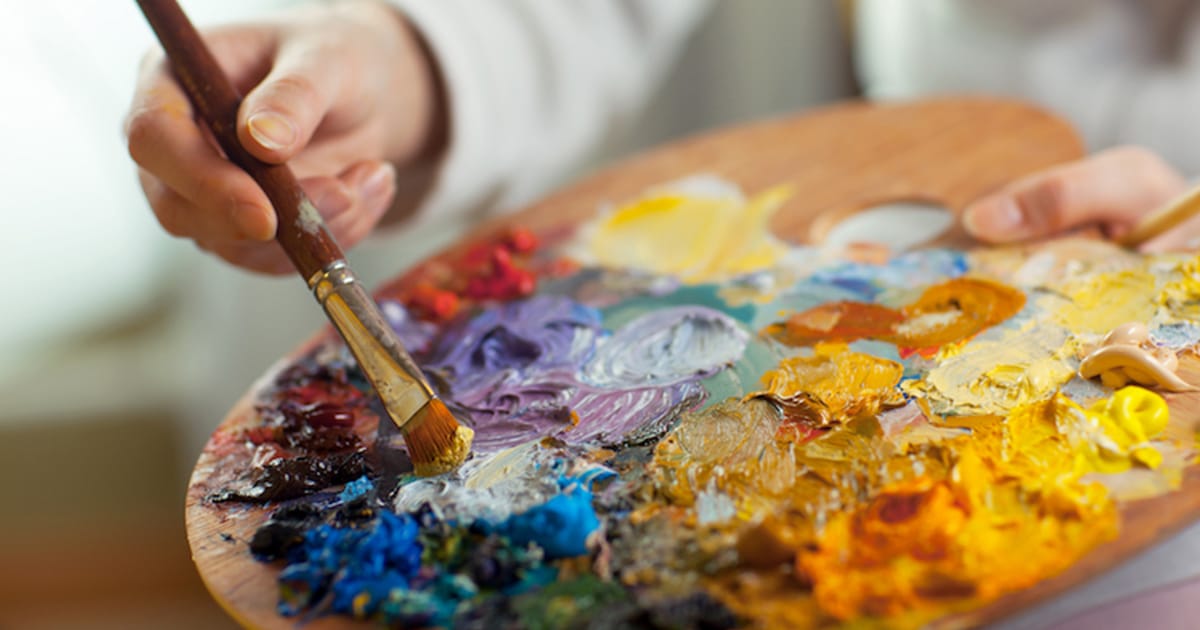Interesting Facts About Paint!!

We'll be sharing some interesting facts about paint, as well as a brief history and even some info on psychological impact.
Enjoy!
** The earliest paints used animal fat and saliva as a binding agent, and later—during the Middle Ages—artists used eggs to combine their pigments.
** The earliest known oil paintings were Buddhist murals found in Afghanistan’s Bamiyan caves. They date back to the 7th century CE.
--> Read all about it here: https://www....6042420080422
** As they say, necessity is the mother of all invention! Francis Davis Millet is credited with the invention of spray paint while working under tight deadlines to complete construction for The Chicago World’s Fair.
***** ACRYLIC PAINT (*OUR FAVORITE) *****
Acrylic paint was invented in the 1940s, and many artists preferred it over oil paint due to its affordability. The water-based pigment wasn’t only cheap, but it dried quickly and held bright colors, making it a popular choice among modern artists.
This is the PAINT THAT WE USE IN OUR STUDIO, here at Pinot's Palette; When you join us for a class, you'll get to work with this incredible type of paint, too!
What We Love Most:
--> It's versatile. You can paint on any surface that is oil and wax free. This includes canvas, wood, paper, rocks, glass, fabric, cardboard, metal, and plastic. With the proper preparation you can use acrylic paint on almost everything.
--> It dries quickly. This allows you to finish your project faster.
--> It's water-soluble. You can wash it off your hands and brushes (while they're still wet) with soap and water with no need for paint thinners.
--> It's less non-toxic and safer around children and pets.
--> It’s more affordable.
--> It’s flexible. You can mix acrylics with lots of different mediums to get different textures, adhering features, or to change the drying time.
--> It's durable. As far as we know, acrylics are flexible and won't crack, peel, or turn yellow.
--> It’s vibrant.
--> It's water-resistant when dry.
***** ALL ABOUT COLOR *****
--> 40,000 years ago, primitive artists invented the first pigments, using a combination of soil, animal fat, minerals, charcoal, and chalk. With these natural materials, they painted cave walls with a limited color palette of red, yellow, brown, black, and white.
--> Over time, processes for making paint began to change, allowing artists a wider color palette to choose from (though, still limited).
For example, sand, lime, and copper ore could be mixed together and heated to make a greenish blue pigment called Egyptian blue; a vibrant red was produced by mixing and roasting together hazardous mercury with sulfur; and white was made by sealing strips of lead in earthenware pots with vinegar and covering with manure.
--> At one time, the most expensive pigment was ultra-marine.
Baroque master Johannes Vermeer famously used ultramarine to paint Girl with a Pearl Earring, and he loved the color so much that he pushed his family into debt. And art historians believe that Michelangelo left his painting The Entombment (1500–01) unfinished because he could not afford to buy more ultramarine blue.
(*See ‘Girl With A Pearl Earring’ Here): https://mymo...earl-earring/
--> As an understanding of chemistry advanced, scientists began trying to create synthetic colors in a lab.
In the early 1700s, a darker Prussian bluewas discovered by accident when a chemist was trying to make red. And in 1826, a synthetic version of ultramarine (called French ultramarine) was invented by French chemist Jean-Baptiste Guimet, who made it by heating kaolinite, sodium carbonate, and sulfur in a kiln. Over the next 100 years, many more artificial colors were created, allowing artists new possibilities and cheaper pigments. By the end of the 19th century, almost any color could be purchased for a relatively low price.
**** COLOR AND MOOD *****
Different paint colors are said to affect your mood. For instance, greens and blues are reportedly good for stress relief and are best used in the bedroom. Vibrant colors, like oranges and reds, are known to invigorate and wake you up and might be best used in an office or a living room.
--> More On How Colors Affect Our Mood: https://www....ds-180957504/

